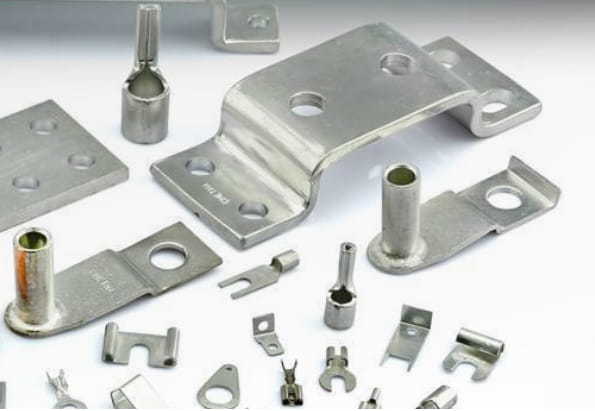As far as electrical and mechanical engineering are concerned, one of the most essential parts is a lug. They provide safe, dependable, and durable connections between cables, wires, and terminals. There are a number of different types of lugs, each having its specifications, designated applications, and materials such as copper or aluminium lugs.

When it comes to these lugs, the importance of understanding their types, materials, and applications simply cannot be overstated – these factors play a crucial role in ensuring that your electrical installations are performing optimally and securely.
In this blog, we will explore different materials of lugs – copper, aluminium, bimetallic; types such as ring-type or fork-type, and understand their applications.
Copper lugs
Thanks to their exceptional conductivity, the role of copper as a material in electrical applications is significant. It is also known to be a durable material and well-resistant to corrosion. These properties of copper make it an excellent material for lugs.
These lugs are made from copper with the highest level of purity to make sure that your electrical connection is efficient, reliable, and safe. This is especially important in applications where the energy loss has to be kept to the least. The electrical properties of copper make it the perfect choice for applications that are critical in nature.
Talking about the applications of copper lugs, they are widely used in various power distribution systems, such as switchgear, distribution panels, transformers, and more. Because copper is highly conductive, it ensures that power is efficiently transmitted through the system.
Lugs made of copper are also used in vehicles to connect the electrical system to the battery. This securely and reliably supplies power to all electrical components. This makes them ideal for use in critical components such as the starter motor, alternators, and more.
Other than that, renewable energy systems such as solar panels and wind turbines also utilise such lugs to link a number of components for efficient energy transfer and the lowest energy loss. Lastly, when it comes to industrial machinery and heavy equipment, such copper cable lugs provide strong connections that can bear the high current loads as well as adversities in the environment.
Aluminium lugs
If you are looking for a lightweight option as compared to lugs made of copper, aluminium is the best material you should go for. It is also relatively a cost-effective alternative. Even though aluminium has a lower conductivity to electricity than copper, it is still used in electrical applications extensively because of its suitable weight-to-strength ratio and ability to resist oxidation.
Such aluminium lugs are now being utilised in a number of applications thanks to the advancements and upgrades consistently happening in alloy technology, thus improving their performance.
The applications of such lugs made of aluminium are diverse. They are widely used in overhead power lines and substations, as well as in high-voltage transmission lines because of their property of being lightweight. Due to this weight reduction, the mechanical pressure on towers and poles is reduced.
Such lugs made of aluminium also extend their use to aerospace and aviation applications, thanks to the light weight of aluminium. It is ideal for use because its lightweight contributes to the performance and fuel efficiency of an aircraft’s power distribution to control systems.
Other than that, aluminium lugs are also used in the wiring and electrical installations when it comes to the construction industry in industrial, residential as well as commercial buildings. Lastly, they are also used in a number of electronic devices as they are compact and efficient.
Bimetallic lugs
The lugs that link copper terminals or busbars to aluminium conductors are called bimetallic lugs. As the name suggests, they are made from two metals – an aluminium barrel is welded with a copper palm to create a bimetallic lug. Such friction welding ensures that the connection stays reliable and prevents galvanic corrosion.
As far as the applications of bimetallic lugs are concerned, they are used in power distribution systems to ensure the maintenance of a safe and enduring connection between the aluminium and copper conductors. It is also used in solar and wind energy installations where either aluminium or copper lugs cannot be used alone.
Bimetallic lugs are also used in industrial and commercial buildings to ensure that the integrity of electrical connections is maintained. Lastly, these types of lugs are also utilised in electrical grids to ensure that they stay reliable and safe.
Types of lugs
Also known as ring terminals, ring-type lugs are closed loops at one end which are attached to a screw or a stud terminal securely. Such a design allows for a more reliable and safer electrical connection and prevents the wire from loosening accidentally. These lugs are available in a number of shapes, sizes, and materials, thus making them a versatile choice for various uses.
On the other hand, fork-type lugs are used for quick connections and easy installations because of their easy-to-attach fork-type design that can be used to screw or bolt terminals without having to remove the fastener completely. Such convenience in design is preferred where frequent disconnections are expected.
Concluding thoughts
Lugs are an important component in an electrical system that ensures its reliability and efficiency. Made from either copper, aluminium, or a combination of the two, they are extensively used in a number of applications. Selecting the right type of lug from either ring type or fork-type lug is also a crucial decision as the safety, reliability, and overall performance of the electrical system is dependent on it.
